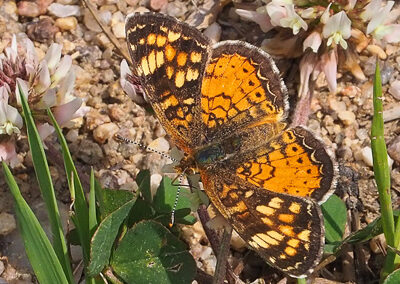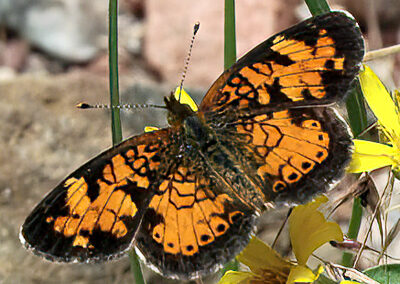
Northern Crescent
(Phyciodes cocyta)
True Brushfoots
Appearance: Antennal clubs of male are orange; females are darker than males. Generally orange above with bold black edging and fine black lining in basal areas of each wing. Forewing shows prominent black patches; hindwing with orange areas more open. Below, hindwing is yellow-orange with darker areas on trailing edge which sometimes shows a light crescent-shaped spot.
Wingspan: Small; 1 1/4 to 1 7/8 inches.
Habitat: Moist mountain meadows, open rocky areas, wooded streams, marshes; foothills, montane.
Flight Times: June to mid-August; one brood. Third-stage caterpillars overwinter.
Larval Foodplant: Asters in the sunflower family (Asteraceae). Eggs are laid in bunches of about 40 on the underside of the host plant leaves. Caterpillars eat leaves, and young ones live and feed communally.
Did You Know…
Some question whether this species is a distinct species from the pearl crescent (Phyciodes tharos) though the two overlap broadly without much hybridization (Brock, 2003).


